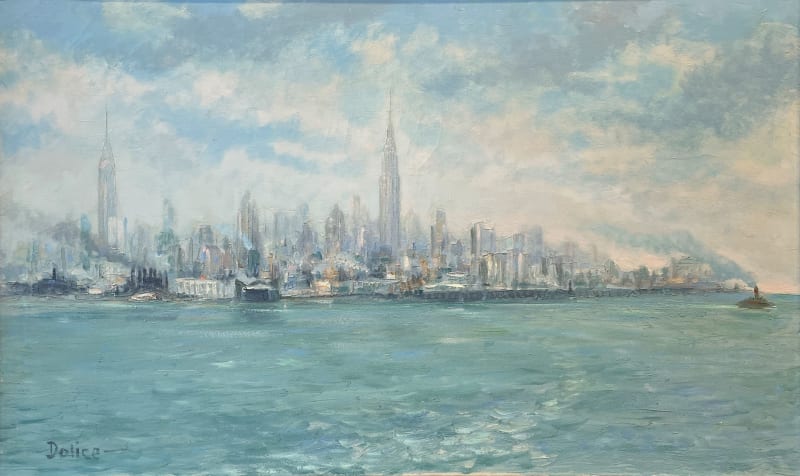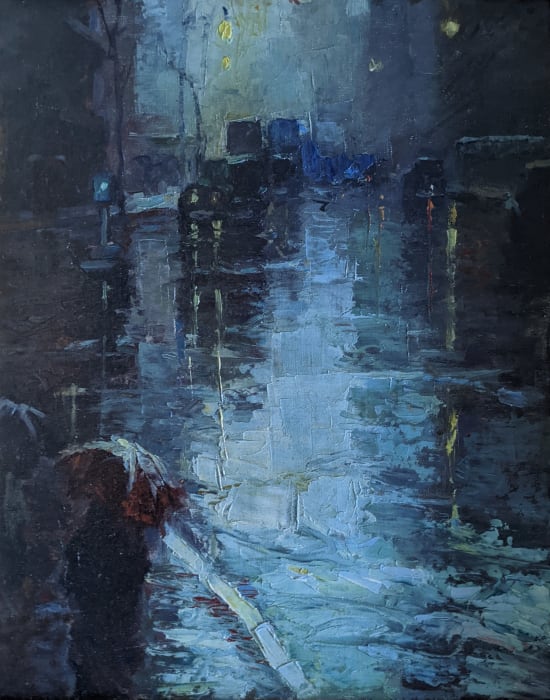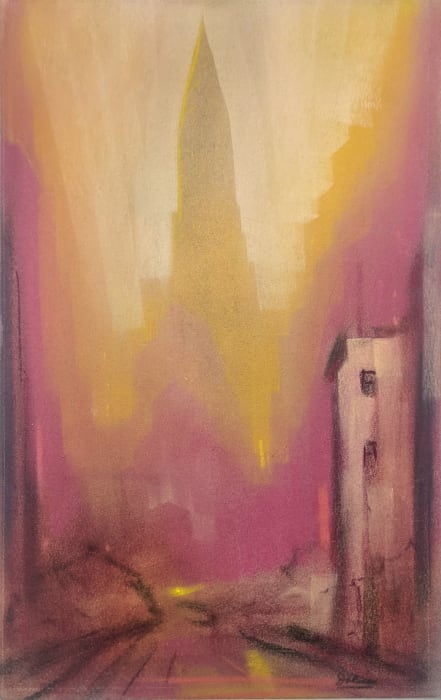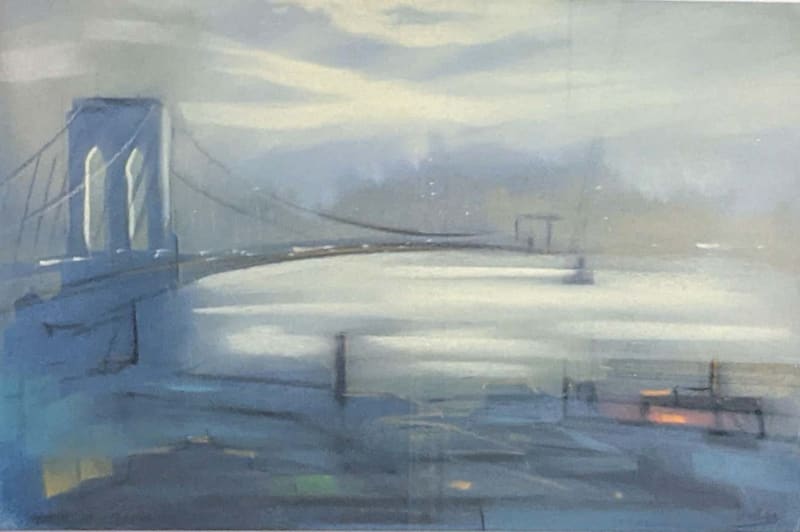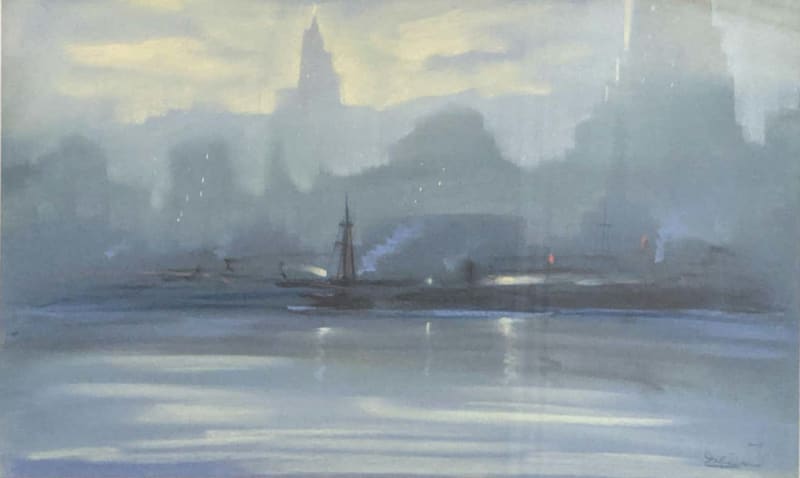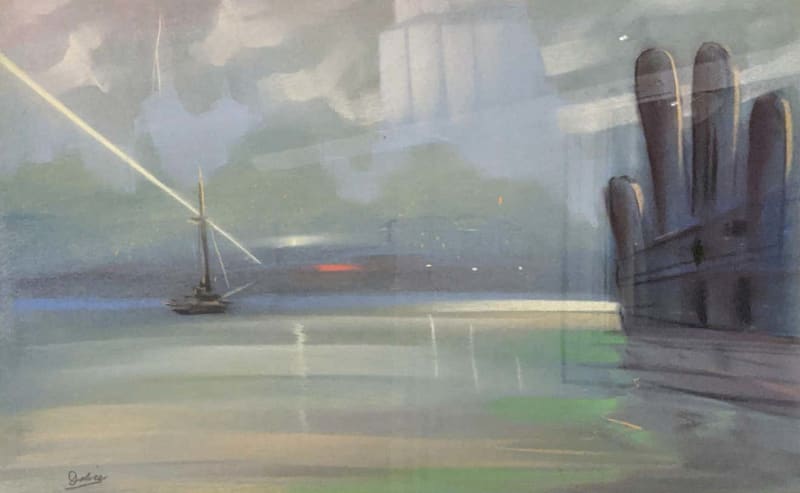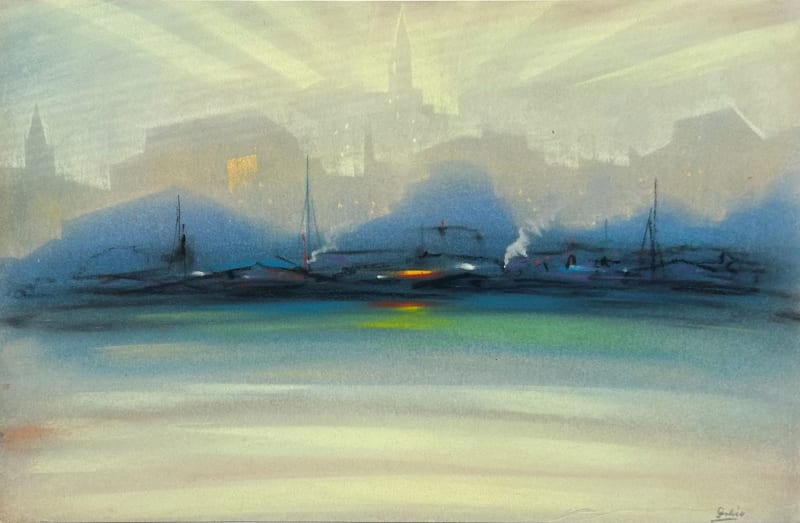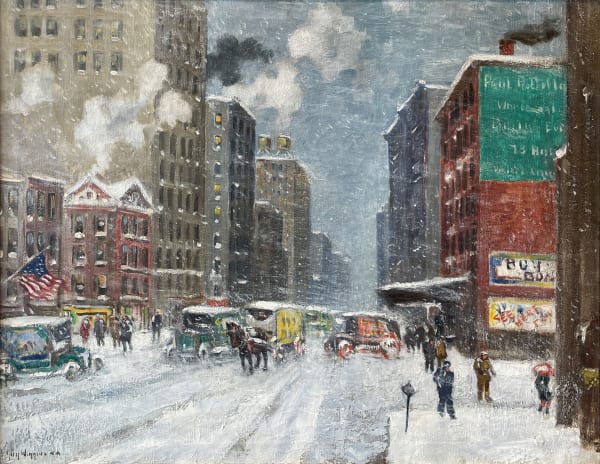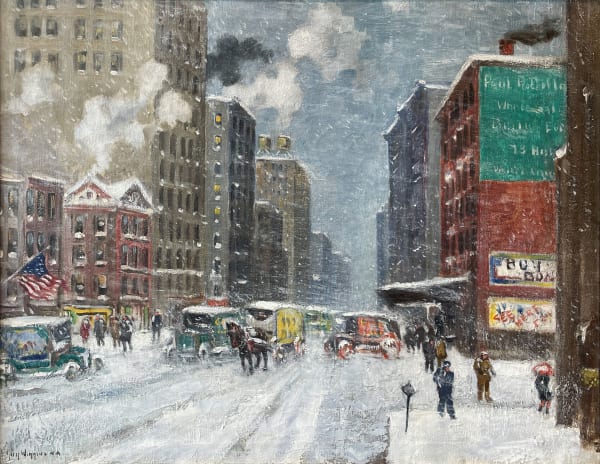-
 New York Harbor (Brooklyn Bridge), circa 1930-40
New York Harbor (Brooklyn Bridge), circa 1930-40 -
 New York Harbor Skyline at Twilight (Searching), circa 1930-40
New York Harbor Skyline at Twilight (Searching), circa 1930-40 -
 Rainy Day, New York City, circa 1940
Rainy Day, New York City, circa 1940 -
 New York Harbor Skyline at Twilight (Harmony), circa 1930-40
New York Harbor Skyline at Twilight (Harmony), circa 1930-40 -
 Empire State Building, circa 1930-40
Empire State Building, circa 1930-40 -
 View from New York Harbor, circa 1960
View from New York Harbor, circa 1960 -
 New York Harbor Nocturne
New York Harbor Nocturne
Leon Dolice was one of the masters of the New York City street scene in the decades between the world wars. He showed an unquenchable fascination with the built urban environment and combined it with an interest in modernist technique and a knowledge of European art. His work helped to redefine realist painting and remains a brooding tribute and memorial to the New York of the 1920s and 1930s.
Dolice was born in Vienna, Austria in 1892, the son of a machinist. As a young man, he worked as an illustrator and stage designer and traveled the capital cities of Europe, studying the works of the ‘old masters.’
At age 28, Dolice immigrated to New York City and moved to Greenwich Village, then in its first Bohemian incarnation. Dolice developed a friendship with George Luks and became proficient at the art of copperplate etching. Dolice owned an art gallery and studio in his home on Third Avenue and 32nd street where he sold his depictions of the city. One of his favorite subjects was the Third Avenue El, directly adjacent to this studio, but he also traveled the eastern coast, painting urban scenes in Washington D.C., Baltimore, and Philadelphia.
Dolice’s New York City etchings depict the city's landmarks, old buildings, and neighborhoods such as Washington Square Park, Madison Square Garden, Central Park, the Fulton Fish Market, and the Empire State Building. Few of his etchings and engravings were published in numbered editions but most seem to exist in editions of fewer than 75 impressions.
In New York, Dolice was associated with an influential group of painters who lived near bustling Union Square and were teachers or students at the Art Students League. The group, later known as the Fourteenth Street School, was led by League instructor Kenneth Hayes Miller and his students Isabel Bishop and Reginald Marsh, as well as social realist painters Raphael Soyer and Moses Soyer. Many of these artists included human figures in their work and reveled in depicting common urban dwellers in a variety of activities. Dolice’s work, on the other hand, was often marked by the absence of any people, perhaps taking his cue from the popular Precisionist movement of the 1930s.
Unfortunately for Dolice, both realist art and copperplate etchings fell out of favor in New York City after World War II. In the 1950s, he experimented with pastels, linocuts, and oil painting all the while retaining his interest in the New York buildings, elevated trains, and bridges. Although he dabbled in other subjects, he consistently rejected abstraction for a realist outlook.
Dolice died in New York in 1960. Much of his later work portrays New York City as a grand-but-lonely place. He was not a versatile artist but, at his best, captured a particular urban temperament that still resonates with many New Yorkers. In the twenty-first century, he remains a master of a mysterious urban mood that continues to attract interest and buyers.
-

The City That Never Sleeps: New York Scenes, 1860 - 1960
December 10, 2022 - January 28, 2023Read more -

The Inaugural Show
A Century in American Art May 3 - September 3, 2022Lincoln Glenn is proud to invite you to its inaugural exhibition at 126 Larchmont Ave. This first exhibition will be a sample of the gallery's inventory, representing over 100 years...Read more







